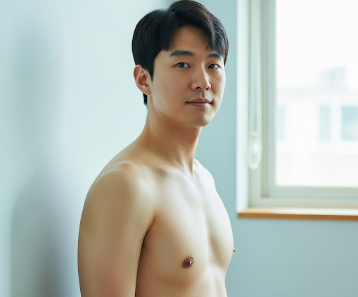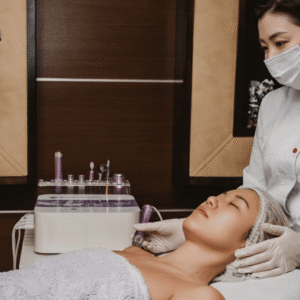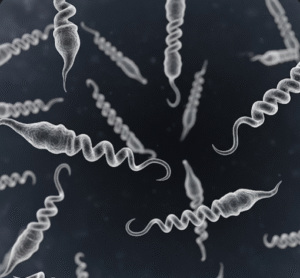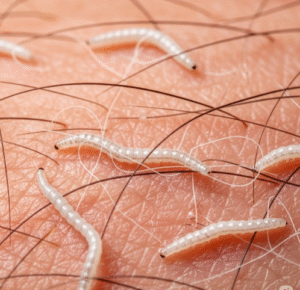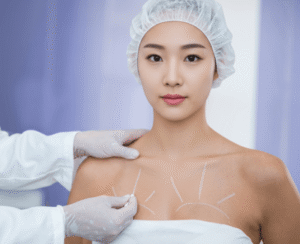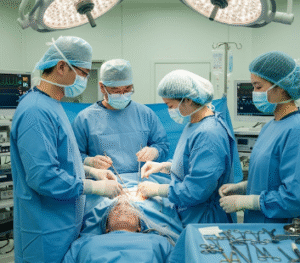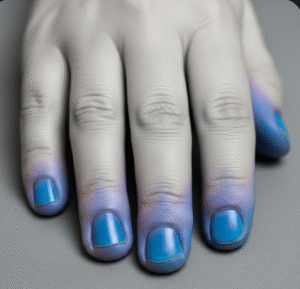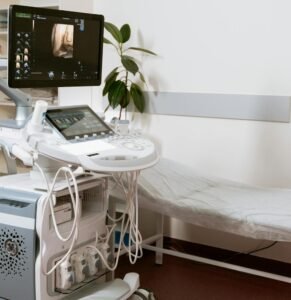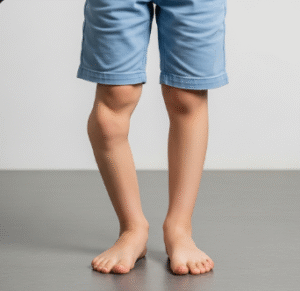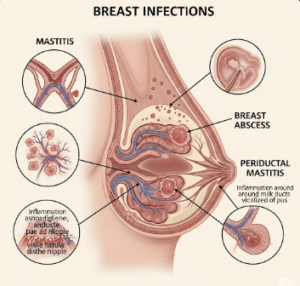Overview
Gynecomastia refers to the abnormal enlargement of breast tissue in males. It is a benign (non-cancerous) condition, but it can cause significant distress, discomfort, and embarrassment. The condition results from an imbalance between the hormones estrogen (which promotes breast tissue growth) and testosterone (which suppresses breast tissue development).
Gynecomastia can affect one or both breasts, and it may develop during different stages of life — newborns, puberty, or older age. While it is not usually dangerous, it sometimes signals underlying health problems such as hormonal disorders, medication side effects, or liver disease.
In South Korea, gynecomastia treatment is advanced, offering both medical management and surgical options. Cosmetic and reconstructive plastic surgery centers in Korea are globally renowned, attracting international patients who seek safe, effective, and discreet treatment.
Key Facts
➲ Gynecomastia is the enlargement of male breast tissue due to hormonal imbalance.
➲ It can affect newborns, teenagers, and older men at different life stages.
➲ Common causes include puberty, medications, obesity, and chronic diseases.
➲ Though usually benign, it can mimic or mask male breast cancer in rare cases.
➲ Symptoms may include tenderness, swelling, and firm glandular tissue.
➲ Treatment in Korea includes hormonal therapy and minimally invasive surgery.
What is Gynecomastia?
Gynecomastia is a medical term for the benign proliferation of glandular breast tissue in males. It differs from pseudogynecomastia, which is simply fat accumulation in the chest area due to obesity.
True gynecomastia involves the growth of glandular tissue, usually presenting as a firm or rubbery mass beneath the nipple. The condition is not harmful but can lead to psychological stress, body image issues, and social withdrawal, especially in adolescents.
What Symptoms Are Related to Gynecomastia?
The main symptom is the enlargement of breast tissue, which can be symmetrical or asymmetrical. Associated symptoms include:
➲ Swelling or fullness of one or both breasts.
➲ Firm, rubbery tissue under the nipple.
➲ Tenderness or sensitivity in the breast area.
➲ Stretching of the areola or nipple changes.
➲ Rarely, discharge from the nipple (which requires urgent evaluation).
➲ Emotional distress, embarrassment, and self-consciousness.
What Causes / Possible Causes
Gynecomastia results from an imbalance between estrogen and testosterone. The causes can be classified into physiological, pathological, medication-related, and lifestyle factors.
1. Physiological Causes
➲ Newborn gynecomastia (due to maternal estrogen, usually disappears within weeks).
➲ Pubertal gynecomastia (common during teenage years, often resolves naturally).
➲ Age-related gynecomastia (seen in older men due to declining testosterone).
2. Medical & Pathological Causes
➲ Hypogonadism (low testosterone levels).
➲ Hyperthyroidism (excess thyroid hormones).
➲ Liver or kidney disease (hormone metabolism impairment).
➲ Testicular tumors or adrenal tumors producing excess estrogen.
➲ Obesity, which increases aromatization of testosterone into estrogen.
3. Medication-Induced Causes
➲ Anti-androgens (used in prostate conditions).
➲ Certain antibiotics and antifungals.
➲ Chemotherapy drugs.
➲ Cardiovascular medications (like spironolactone, calcium channel blockers).
➲ Drugs of abuse (alcohol, marijuana, anabolic steroids, heroin).
4. Lifestyle & Other Causes
➲ Excessive alcohol consumption.
➲ Steroid abuse in bodybuilding.
➲ Malnutrition or refeeding syndrome.
When Should I See My Doctor?
Seek medical advice if you notice:
➲ Rapid breast enlargement or painful swelling.
➲ Breast asymmetry or hard lumps under the nipple.
➲ Nipple discharge, especially if bloody.
➲ Associated symptoms like testicular swelling, weight loss, or fatigue.
➲ Persistent gynecomastia lasting longer than 12 months.
➲ Psychological distress interfering with daily life.
Important: Male breast cancer, though rare, can mimic gynecomastia. If the lump is hard, fixed, and associated with nipple retraction, urgent evaluation is needed.
Care and Treatment
Treatment depends on the underlying cause, severity, and patient preference.
1. Observation & Lifestyle Measures
➲ Pubertal gynecomastia often resolves spontaneously within 1–2 years.
➲ Weight loss and exercise can reduce fat-related chest enlargement.
➲ Avoiding alcohol, drugs, and medications that trigger gynecomastia.
2. Medications
➲ Selective estrogen receptor modulators (SERMs) like tamoxifen.
➲ Aromatase inhibitors (reduce estrogen production).
➲ Hormone replacement therapy for hypogonadism.
3. Surgical Treatment
When gynecomastia persists or causes emotional distress, surgery may be considered:
➲ Liposuction – for fat removal in pseudogynecomastia.
➲ Glandular tissue excision – for true gynecomastia.
➲ Combination of liposuction + excision for optimal contouring.
4. Psychological Support
➲ Counseling for body image concerns.
➲ Support groups for teenagers and men struggling with self-esteem.
Treatment Options in Korea
South Korea is internationally recognized for plastic and reconstructive surgery, making it a leading destination for gynecomastia treatment.
Diagnosis in Korea
➲ Comprehensive blood tests for hormone levels.
➲ Ultrasound or mammogram to differentiate true gynecomastia from fat tissue or tumors.
➲ CT/MRI if testicular or adrenal tumors are suspected.
Medical Treatments in Korea
➲ Endocrinology specialists provide hormone-balancing therapies.
➲ Access to latest-generation SERMs and aromatase inhibitors.
➲ Multidisciplinary teams (endocrinologists, urologists, and plastic surgeons) work together for tailored care.
Surgical and Advanced Therapies
➲ Minimally invasive endoscopic or keyhole surgeries with tiny scars.
➲ Advanced liposuction technology for natural chest reshaping.
➲ Combination procedures for body contouring (popular among medical tourists).
➲ Day-surgery systems allow faster recovery and return to daily life.
Rehabilitation and Support
➲ Specialized cosmetic aftercare programs in Seoul and Busan clinics.
➲ Scar management therapies for better aesthetic results.
➲ Nutritional counseling and lifestyle coaching for long-term balance.
Quick Highlights Box
➲ Gynecomastia = benign male breast tissue enlargement.
➲ Most common in newborns, teenagers, and older men.
➲ Caused by hormonal imbalance, drugs, obesity, or medical conditions.
➲ Symptoms include swelling, tenderness, and firm gland under nipple.
➲ Korea offers advanced diagnostics and minimally invasive surgery.
➲ Seek medical care if pain, rapid growth, or nipple discharge occurs.

